A Simple Guide to Feeding Your Feline Friend
Cats, with their innate hunting instincts, deserve specialized nutrition. Explore our guide on three cat food types—dry kibble, wet food, and homemade meals. Learn how to feed a cat properly, ensuring their happiness and optimal health.
Dry Cat Food
Dry cat food, also known as kibble, is a popular choice among cat owners due to its convenience and long shelf life. However, it’s essential to understand both the advantages and disadvantages of this dietary option to make informed decisions about your cat’s nutrition.
Advantages:
- Dry cat food is easy to store, serve, and doesn’t require refrigeration. This convenience makes it an attractive option for busy cat owners.
Some dry kibble is designed to promote dental health. The crunchy texture can help reduce the buildup of plaque and tartar on a cat’s teeth.
Dry cat food has a longer shelf life compared to wet food, making it less likely to spoil if left out.
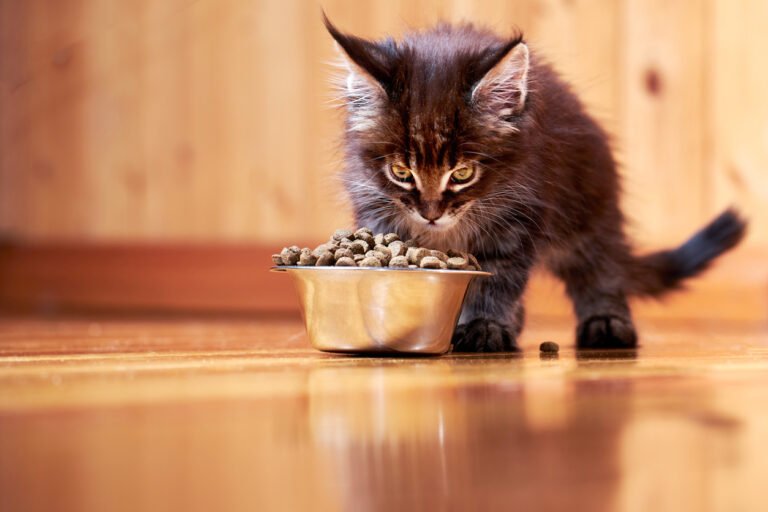
Disadvantages:
- One of the most significant drawbacks of dry cat food is its low moisture content. Cats are not naturally inclined to drink a lot of water, and this can lead to dehydration, urinary tract issues, and kidney problems. The lack of moisture in their diet is a major concern.
- Many dry cat foods contain fillers such as grains and carbohydrates, which aren’t ideal for obligate carnivores like cats. Cats require a diet rich in animal-based protein, and these fillers may dilute the nutritional value of the food.
The convenience of free-feeding dry kibble can lead to overeating and obesity if portion control is not carefully monitored.
Wet Cat Food
Many cat owners prefer wet cat food, often called canned cat food, because it’s high in moisture and protein. But it’s important to know the pros and cons to make the right choice for your cat’s diet.
Advantages:
- One of the most significant advantages of wet cat food is its high moisture content. This aids in keeping your cat well-hydrated, which is especially beneficial for cats with low water intake.
- Wet cat food closely resembles the high-protein content of a cat’s natural prey-based diet, which aligns with their obligate carnivore status.

Disadvantages:
- Wet cat food has a limited shelf life, and once opened, it must be consumed promptly or refrigerated to prevent spoilage.
- The strong odor of wet cat food may not be appealing to some cat owners.
- While high in protein, wet cat food may not provide the necessary balance of nutrients on its own.
Also read: The Best Way to Store Your Cat’s Food.
Homemade Cat Food
Crafting homemade cat food is an excellent way to ensure your feline companion enjoys a diet tailored to their taste and nutritional needs. Here, we explore what’s safe and nutritious, offer some delectable recipes, and emphasize the importance of balanced meals.
Safe and Nutritious Ingredients:
- Protein Powerhouses: Cats are obligate carnivores and thrive on animal-based protein. Opt for lean meats like chicken, turkey, and beef. Fish, such as salmon and tuna, is also a favorite.
- Organ Meats: Liver and kidney meats, while nutrient-rich, should be used sparingly due to their potency.
- Healthy Fats: Fats from meats and fish are essential for energy and flavor.
- Minimal Carbs: Cats don’t require many carbohydrates, but a small amount of rice or oatmeal can provide fiber.
- Fruits and Veggies: While not a primary component, small portions of fruits and vegetables can supplement vitamins and minerals.
Foods to Avoid
- Toxic Foods: Onions, garlic, grapes, and chocolate are toxic to cats and should never find their way into their meals.
- Bones: Cooked bones can splinter, posing a choking hazard. Always remove bones from meat.
- Dairy Dilemma: Most adult cats are lactose intolerant. Avoid giving them milk or dairy products.
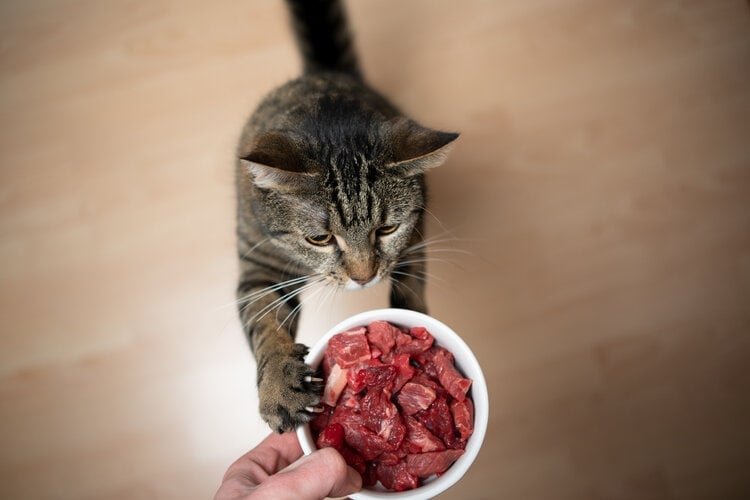
Creating a Balanced Diet
Balancing a homemade cat food diet is crucial for your cat’s well-being. Consider these tips:
- At least half of your cat’s diet should consist of high-quality animal-based protein.
- Fats should be in moderation to prevent overconsumption.
- Measure portions accurately to avoid overfeeding.
- Keep carbohydrate content to a minimum.
- Depending on your cat’s specific needs, supplements like taurine or vitamins may be necessary. Discuss this with your veterinarian.
- Cats appreciate variety in their diet. Rotate protein sources and ingredients to keep mealtime exciting.
- Ensure your cat has access to fresh, clean water at all times.
Can cats regulate how much they eat?
Yes, cats have a natural ability to regulate their food intake. Unlike dogs, cats are typically good at self-regulating and will eat according to their hunger. However, it’s essential to monitor their weight and adjust portions as needed.
The Importance of Variety in a Cat's Diet
While dry cat food offers some benefits, it’s essential to remember that no single type of cat food can provide all the necessary nutrients for a cat’s health. Cats thrive on variety and require a balanced diet that includes a mix of protein sources, vitamins, and minerals. Relying solely on dry cat food can lead to nutritional deficiencies and health issues.
To provide the best diet for your cat, it’s advisable to incorporate wet cat food and occasionally homemade cat food into their meals. Wet cat food helps with hydration, and homemade meals allow you to control the quality of ingredients. Consulting with a veterinarian or pet nutritionist can help you create a well-rounded diet tailored to your cat’s specific needs.
Conclusion
Remember, choosing the right food for your cat is essential for their health and happiness. Whether you prefer dry, wet, or homemade food, maintaining a balanced and varied diet is key. Alongside proper nutrition, don’t forget to focus on your cat’s hygiene and regular veterinary care for a long and joyful feline life.
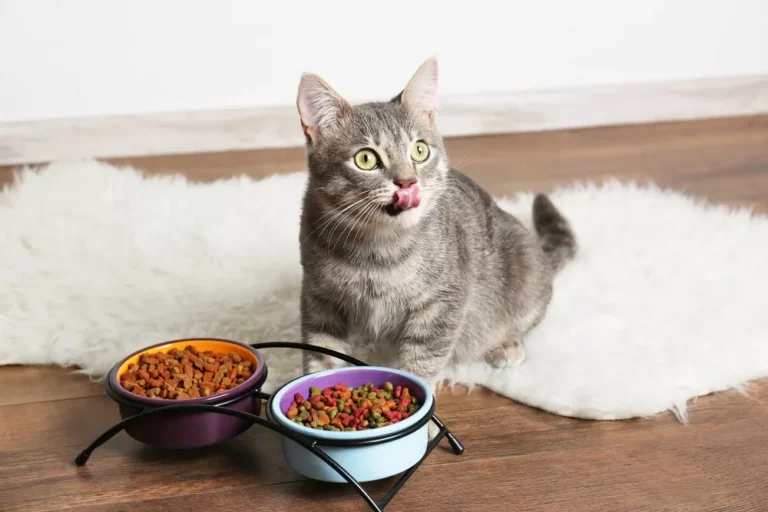
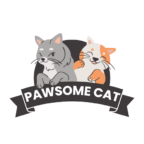
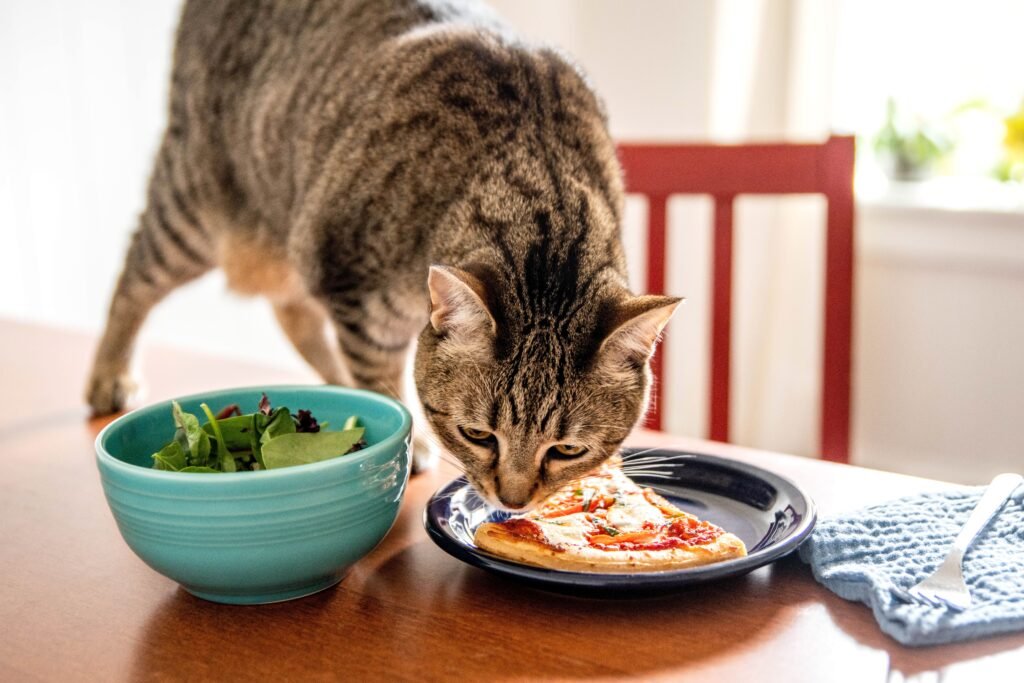
Pingback: Kitzy Cat Food Review - Pawsome Cat Blog
Pingback: What You Need to Know Before Bringing a Cat into Your Life
Pingback: How to Stop Cats From Fighting Each Other